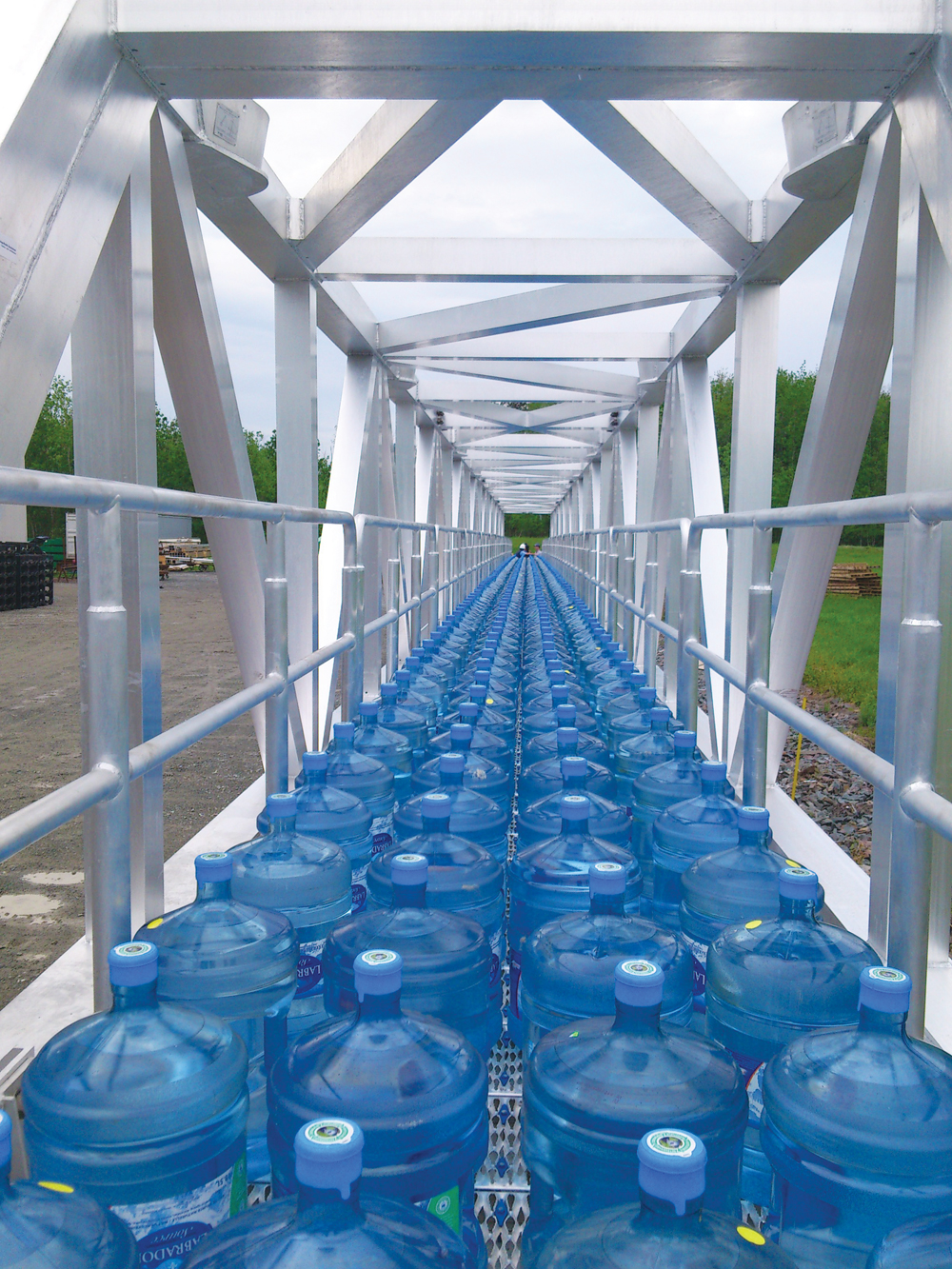Montreal-based MAADI Group recently designed a 151-foot-long, 6½-foot-wide pedestrian work bridge to connect platforms in the West Philippine Sea. Using high-strength aluminum for the bridge’s material, MAADI designed the bridge with lateral movement capability that could withstand deep-ocean movement and wind gusts up to 200 km/hr (124 mph).
MAADI’s President/CEO, Alexandre de la Chevrotière, says that water and wind movements can cause the platforms to shift by as much as one inch, so the bridge was engineered to account for movement up to one meter. A trolley system at one end of the bridge allows slight back-and-forth movements of the bridge between the platforms.
The span was built in four sections. Its abutments are unique, according to de la Chevrotière, in that their pin connections rotate on two axes. There’s also a pin connection at the top of the trolley, which allows the bridge to move in several different directions by as much as three degrees to account for ocean movements, he says.
The 13-ton bridge was built to accommodate up to 80 workers on deck. (The accompanying image shows 8.4 tons of water being used to test the span’s load capacity.) The bridge’s camber was designed to reduce the deflection caused by dead and live loads.
“Aluminum is the material of the future,” says de la Chevrotière. “It doesn’t rust and it’s maintenance free.”
Read about more innovations from BD+C's 2014 Great Solutions Report.
Related Stories
| Aug 11, 2010
Great Solutions: Healthcare
11. Operating Room-Integrated MRI will Help Neurosurgeons Get it Right the First Time A major limitation of traditional brain cancer surgery is the lack of scanning capability in the operating room. Neurosurgeons do their best to visually identify and remove the cancerous tissue, but only an MRI scan will confirm if the operation was a complete success or not.
| Aug 11, 2010
Great Solutions: Collaboration
9. HOK Takes Videoconferencing to A New Level with its Advanced Collaboration Rooms To help foster collaboration among its 2,212 employees while cutting travel time, expenses, and carbon emissions traveling between its 24 office locations, HOK is fitting out its major offices with prototype videoconferencing rooms that are like no other in the U.
| Aug 11, 2010
2009 Judging Panel
A Matthew H. Johnson, PE Associate Principal Simpson Gumpertz & HegerWaltham, Mass. B K. Nam Shiu, SE, PEVP Walker Restoration Consultants Elgin, Ill. C David P. Callan, PE, CEM, LEED APSVPEnvironmental Systems DesignChicago D Ken Osmun, PA, DBIA, LEED AP Group President, ConstructionWight & Company Darien, Ill.
| Aug 11, 2010
Inspiring Offices: Office Design That Drives Creativity
Office design has always been linked to productivity—how many workers can be reasonably squeezed into a given space—but why isn’t it more frequently linked to creativity? “In general, I don’t think enough people link the design of space to business outcome,” says Janice Linster, partner with the Minneapolis design firm Studio Hive.
| Aug 11, 2010
BIM school, green school: California's newest high-performance school
Nestled deep in the Napa Valley, the city of American Canyon is one of a number of new communities in Northern California that have experienced tremendous growth in the last five years. Located 42 miles northeast of San Francisco, American Canyon had a population of just over 9,000 in 2000; by 2008, that figure stood at 15,276, with 28% of the population under age 18.







